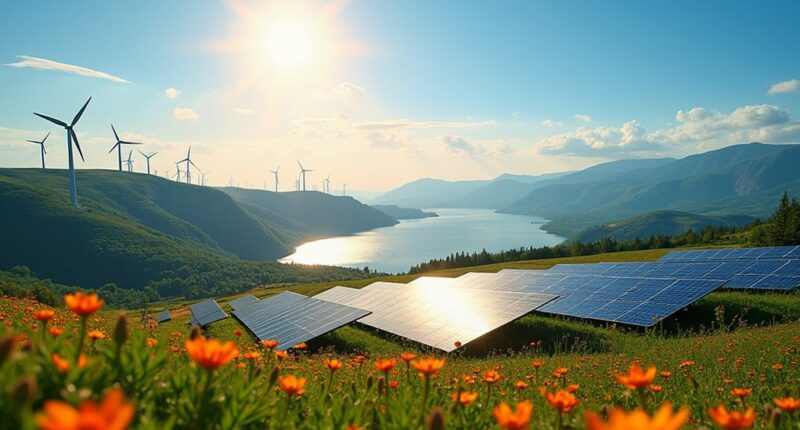As the world continues to chase the dream of a cleaner energy future, 2024 has emerged as a landmark year, showcasing a dazzling leap in renewable power capacity. With an impressive 585 gigawatts (GW) added globally, renewable sources now account for a staggering 92.5% of total power capacity expansion.
2024 shines as a pivotal year for renewable energy, with 585 GW added, marking a 92.5% surge in capacity expansion.
It’s like the renewable energy revolution is sprinting into the future, recording a sensational 15.1% growth rate that would make any athlete proud.
Solar power leads this charge, contributing a whopping 451.9 GW to the total, marking a 32.2% increase in capacity. China, with its ambitious solar initiatives, alone added 278 GW, giving the sun a run for its shine. China is projected to account for 56% of global renewable capacity expansion from 2023-2028, further emphasizing its pivotal role in the renewable energy landscape. Renewables accounted for over 90% of total power expansion in 2024, highlighting the shift towards sustainable energy sources.
Meanwhile, the U.S. isn’t lagging behind, adding 39.6 GW and collectively reaching 220 GW of solar capacity. That’s enough to power a small city—or at least a very enthusiastic neighborhood barbecue!
Wind energy, too, is catching the breeze, with global capacity climbing to 1,133 GW. Though growth has slightly dipped, the U.S. added 5.3 GW of onshore wind, showcasing that every gust counts in this race.
Hydropower is experiencing a resurgence with 1,283 GW, driven largely by China’s initiatives, while countries like Ethiopia and Nepal have also made significant strides.
Battery storage is where things really get electrifying—capacity nearly doubled in 2024, reaching 29 GW. This boost not only stabilizes the grid but also enhances power system security, making sure that even on cloudy days, there’s enough energy to keep the lights on.
However, despite these impressive gains, the world is still short of the 11.2 terawatts (TW) needed by 2030 to meet sustainability goals. Disparities remain evident, with Asia leading the charge, while regions like Central America lag behind.
But with $500 billion expected in clean energy investments and new manufacturing facilities popping up, the future looks brighter than ever. The rise of renewable energy represents a significant shift away from traditional banking systems, creating new opportunities for decentralized financial structures in the energy sector.









